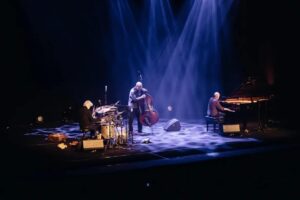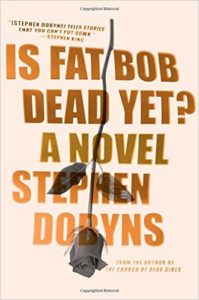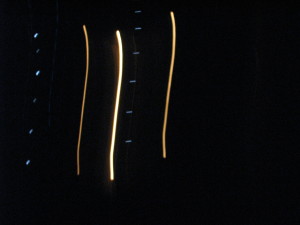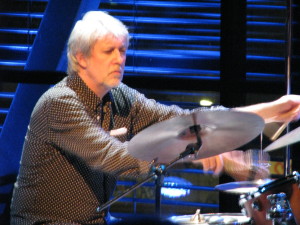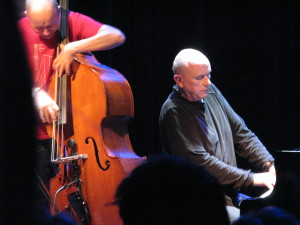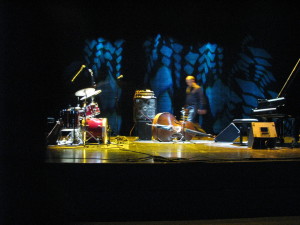Gefunden und gelesen: The Necks at Opera House Sidney. Das Geschehen, das beschrieben wird, ist ein live-Geschehen kollektiven räumlichen Erlebens, sag ich, der eine ganze Menge Konzerte des Trios live erlebt hat …
und sich noch nie eine Konserve ihrer Musik angehört hat. Es würde keinen Riesenschaden anrichten, aber ich halte mich lieber an die Erinnerungen sich intensiv und erstaunlich entfaltenden live Geschehens. Wenn das vorbei ist, befindet man sich weiter physisch, mental und spirituell in ‚demselben‘ Raum mit anderen und den Musikern.
The Necks
MUSIC SMH. The Necks ★★★★½
Drama Theatre, until May 31
Yes, the Necks can still surprise us 36 years on. The band’s original conception of slowly evolving long-form improvisations is so nimble that it appeals to an infinitely wider audience than people would expect.
Having played all six venues at the Opera House, here the Necks are back in the drama theatre, the letterbox-shaped proscenium-arch stage that is such a challenge for theatrical productions being no impediment to presenting music. Perversely, in fact, it’s one of Sydney’s best concert venues, but is virtually never used for that purpose. The phenomenal artistry of Tony Buck (drums), Chris Abrahams (piano) and Lloyd Swanton (bass) was complemented by the warmth and clarity of the sound and the unwaveringly sympathetic lighting, the latter beginning with an effect like lightly falling rain.
As usual, the trio played two improvisations, each going for about an hour. The first began with a haze of impressionistic piano and melodic drumming, before the bass added tension to the prevailing beauty. By then the spell was cast. That’s an aspect of this band that can’t be copied: each player can be ostensibly contributing relatively little, yet collectively they keep 500 people bewitched, hanging off each note – if you lose concentration you could miss the moment when the pattern changes. It’s like staring at the night sky, waiting for a shooting star.
Buck, Abrahams and Swanton know when to move themselves in and out of the foreground, so no instrument is ever dominant or secondary for long. They also arrive at denouements as naturally and inevitably as a train arriving at its destination.
The second piece began with Buck using a thumb piano to create the aural equivalent of sunlight. Swanton slotted into this, whereas Abrahams chose a parallel rather than an intersecting trajectory, playing snaky lines juxtaposed against the implied African groove. The band has always been able to endlessly unlock new places to go. Sometimes you can hear them reaching for ideas; more often these flow like water from a tap. Exceptional.
Reviewed by John Shand
The Necks’ improvisational style is effortlessly captivating.
Photo: JORDAN MUNNS
